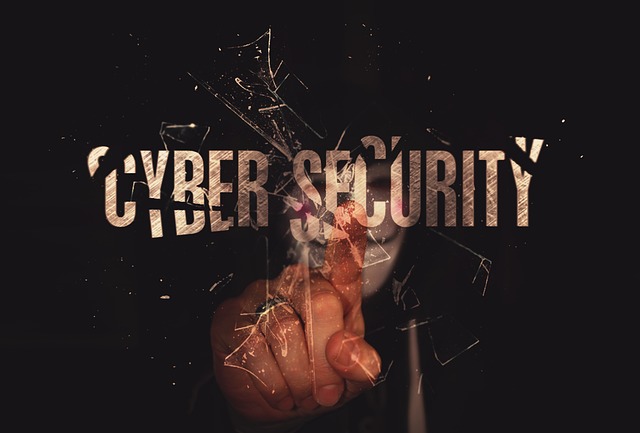The Future of Cybersecurity-Balancing Innovation with Safety
In a world where technological advances and digital innovation seem almost daily, cybersecurity remains a crucial backbone supporting this ever-expanding digital universe. As industries leap towards more sophisticated technologies like artificial intelligence (AI), big data, and the Internet of Things (IoT), balancing these innovations with robust safety measures becomes increasingly critical. The challenge lies not only in protecting vast amounts of data but also in securing the very systems that manage our utilities, healthcare, finance, and more against evolving threats.
Innovative Technologies at the Forefront
Among the innovations revolutionizing cybersecurity, technologies like AI and machine learning (ML) play pivotal roles in enhancing threat detection and response. These tools allow systems to analyze patterns in vast datasets quickly, identifying anomalies that could signify potential threats. This rapid analysis helps in addressing attacks more swiftly, potentially neutralizing cyber threats before they cause significant damage. However, the integration of such advanced technologies into cybersecurity strategies brings its own set of challenges, primarily the security of the technologies themselves.
For example, AI/ML security assessments are critical in identifying and mitigating vulnerabilities within AI-powered security systems. These evaluations are essential for uncovering flaws in machine learning models that attackers might exploit to alter system behavior. Techniques such as data poisoning, where attackers feed altered data into systems to train them incorrectly, pose significant risks. Security assessments ensure that AI algorithms are not just effective but are also safeguarded against such manipulations, enhancing the resilience of technology-driven security solutions.
The Growing Complexity of Cyber Threats
The landscape of cyber threats has grown not only more complex but also more dangerous. Traditional security measures are no longer sufficient to counteract the sophisticated tactics employed by modern cybercriminals. These adversaries have moved beyond mere phishing scams and now employ advanced malware, ransomware, and social engineering techniques that can bypass conventional defenses. This escalation prompts a deeper integration of advanced technological solutions to both predict and combat potential breaches.
In response to these challenges, there is a rising emphasis on the technological aspects and the human elements of cybersecurity. Organizations, including those seeking Baltimore MD-managed IT services are increasingly recognizing the need for skilled cybersecurity personnel who can think ahead of attackers and anticipate their moves. This involves training employees in cybersecurity awareness and response strategies, ensuring that they can identify potential threats before they escalate. The human factor remains a critical component in the cybersecurity chain, serving as both a potential vulnerability and a primary defense mechanism. By enhancing the education and training of staff, companies can create a proactive culture of security that complements their technological defenses.
Balancing Act Between Speed and Security
The pace at which digital innovations are adopted can often outstrip the development of corresponding security measures. This imbalance can lead to vulnerabilities where new technologies are implemented before they are fully secure. The race between implementing cutting-edge technologies and ensuring they are safe poses a significant challenge for cybersecurity professionals. They must not only keep up with technological advancements but also anticipate potential security flaws that could be exploited.
Moreover, this dynamic environment necessitates a collaborative approach, where developers, security experts, and stakeholders work together to create comprehensive security frameworks. Ensuring robust communication channels and fostering a culture of security-first thinking within organizations can help mitigate risks, allowing for innovation to proceed without compromising safety.
Cultural Shifts in Cybersecurity Practices
As we move further into the digital age, there is also a notable shift in the cultural aspects of cybersecurity. It is becoming increasingly recognized that cybersecurity is not just a technical issue but a fundamental aspect of every business. This recognition has led to greater investment in cybersecurity frameworks, more comprehensive training for staff at all levels, and a more proactive stance on privacy and data protection. These cultural shifts are crucial as they enhance the overall resilience of organizations against cyber threats.
Additionally, there is a growing emphasis on fostering a security-aware culture within the workplace, where employees are encouraged to adopt best practices and remain vigilant about potential threats. Regular simulations, continuous learning opportunities, and transparent communication about cyber risks help embed cybersecurity into the organizational fabric, ensuring that everyone plays a part in protecting digital assets.
Looking Ahead: The Future of Cybersecurity
Looking ahead, the future of cybersecurity appears to be a blend of more advanced technological defenses and enhanced regulatory frameworks. Governments around the world are beginning to implement more stringent regulations on data protection and privacy, which in turn push companies to adopt higher standards of cybersecurity. Additionally, as cyber threats evolve, so too will the strategies to counteract them. We can expect to see an increase in the use of AI-driven security solutions, as well as more collaborative efforts between industries and governments to enhance cybersecurity measures.
Furthermore, the role of continuous innovation in cybersecurity cannot be overstated. As new technologies like quantum computing emerge, they will bring both new opportunities and challenges for cybersecurity. Staying ahead of potential vulnerabilities will require ongoing research, development, and adaptation, making the cybersecurity field a dynamic and ever-evolving landscape.
Conclusion
As we navigate the complexities of modern technologies and their implementations, the balance between innovation and safety in the realm of cybersecurity is more important than ever. It requires a concerted effort from all stakeholders—business leaders, technology developers, cybersecurity professionals, and policymakers—to ensure that our digital future is not only innovative but also secure. This balance is not merely desirable; it is essential for the sustainable growth and safety of our digital world.

